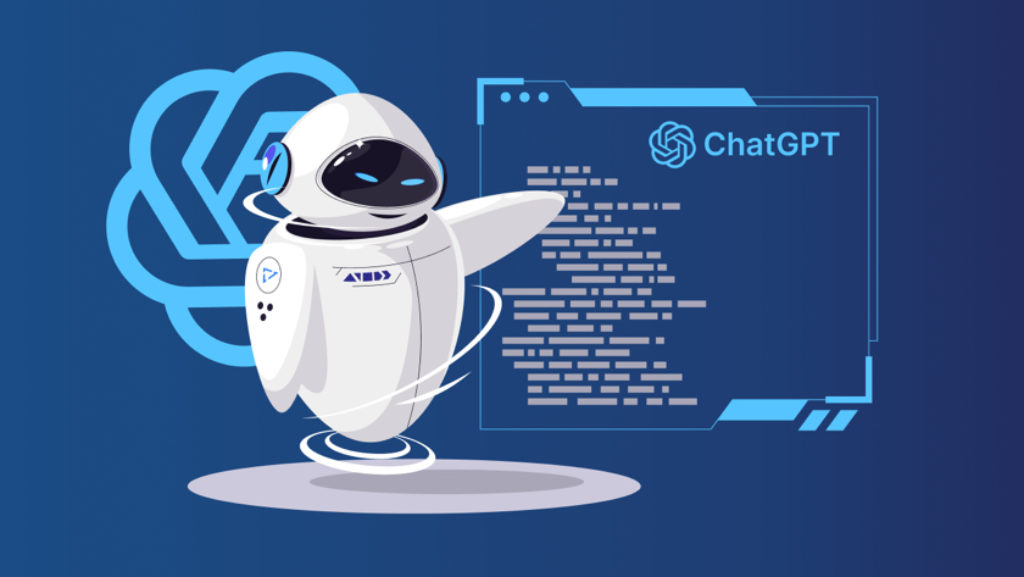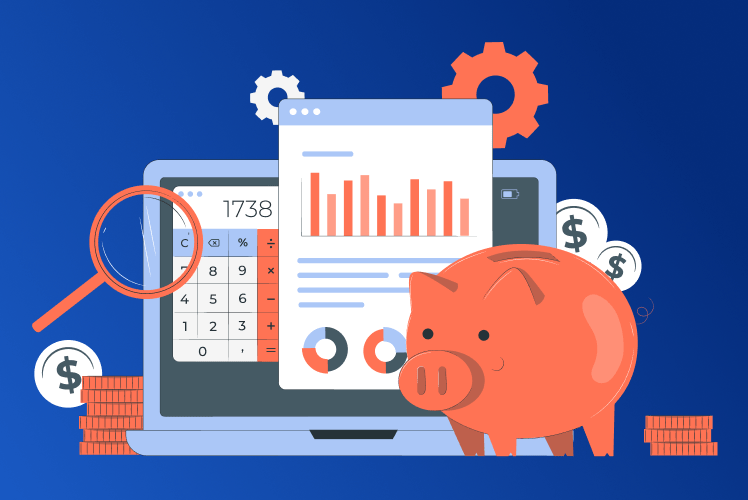Table of Contents
For quite a while, AI has been dramatically transforming the world. We have already been wowed by DALL-E (aka text-to-image generator) and Jasper AI – a “robotic copywriter” capable of generating human-like content. Seems like we have seen everything. However, that’s not true.
The time has come to pay attention to ChatGPT, which has drawn more than a million users in a few months only. People state that ChatGPT can compose Shakespearean poetry or even write code. Nevertheless, the technology also stroke a bit of controversy about its capabilities. Let’s shed some light on why ChatGPT is buzzing and what’s going on with it.

What is ChatGPT?
ChatGPT is an AI-driven language model chatbot that allows you to have human-like conversations (which seem surprisingly natural). It is based on OpenAI’s GPT-3.5 language model that we’ll talk about a bit later. For now, the main things to know about this bot are that it can effectively handle real-time conversations, adapts to changes in these conversations, and provides informative answers to user requests.
It can, for instance, help you improve your resume, explain physical laws in simple words, or write poems. An important thing to note here is that ChatGPT does not know anything itself. In order to provide you with answers, it surfs the Interner for information, recognizes certain patterns in vast swathes of text, and uses its prior training to make the response look more human-like. One more great thing about it – for now, it’s free to use in the form of a beta version.
Who stands behind ChatGPT development?
ChatGPT was developed by OpenAI – a non-profit parent organization of OpenAI LP (the for-profit one). Elon Musk and Sam Altman founded OpenAI in 2015 in their San Francisco research lab. And obviously, you may already know the company by such products as GPT-3 and DALL-E.
As OpenAI constantly improves its GPT language model, the launch of ChatGPT actually came as no surprise. But in order to understand what makes it so revolutionary, we need to rewind and have a look at GPT and LLMs in detail.
A bit on GPT and Large Language Models
ChatGPT falls under the category of Large Language Models (LLM) – AI-based language models trained on massive amounts of data and are typically tens of gigabytes in size. Such models can work with the given text (read, translate, or summarize it) and predict future words in sentences. In this way, LLMs generate content in a way similar to people talking and that’s what makes them so impressive.
Now, getting back to the OpenAI’s GPT. The GPT-3 version, according to Stanford University, has 175 billion parameters and was trained on 570 gigabytes of text. GPT-2, in comparison, had only 1.5 billion parameters and was over 100X smaller. What it means is that the GPT-3 model displays a drastically different behavior than its predecessor. For example, GPT-3 can perform tasks that it was not explicitly trained to perform.
It’s obviously very impressive and large language models, in general, display stellar performance when it comes to content processing and analysis. However, there was one thing missing and it was the understanding of what people wanted. LLMs simply were not able to comprehend what the user meant or wanted. And OpenAI successfully resolved this limitation with the RLHF training.
How ChatGPT was trained and what makes it unique
RLHF stands for Reinforcement Learning with Human Feedback, and this training method was used for ChatGPT. The bot was first trained on the data retrieved from the Internet, including the one from Reddit and similar sources. This was done in order for the model to “understand” how humans respond and how to form dialogues. Then, ChatGPT was trained using human feedback. This was needed so AI could learn what humans expect when asking certain questions.
So what makes ChatGPT so unique and revolutionary is the fact that it understands users’ intent, predicts what humans want/ expect, and displays little to zero toxicity or bias. As a research paper “Training Language Models to Follow Instructions with Human Feedback” put it, bigger models do not equal better when it comes to understanding intent. And since ChatGPT seems to do a good job at understanding it, this should definitely make OpenAI proud.
How to use ChatGPT
As we’ve already said, for now, ChatGPT is free as it comes in a beta version. It’s extremely user-friendly and user-focused, so you should have no problems starting with it.
First, you’ll need to create an OpenAI account on the official website. As soon as you sign up, you can start chatting with ChatGPT. For example, take a chance and ask the AI chatbot for holiday gift ideas for your friends. You will see that the possibilities are endless.
Note though that before using the bot, you will see a few disclaimers that explain the bot’s use case examples, capabilities, and limitations. Below the disclaimers, you will find a message box that allows you to start talking to ChatGPT right away.
In addition to answering requests, ChatGPT is capable of supporting other NLP functions, including language translation, text summarization, and sentiment analysis. All these features make ChatGPT an extremely versatile tool that can be used in many ways.
ChatGPT use cases
Speaking of which, the usage scenarios for ChatGPT are limited only by your imagination. Due to its versatility and customization options, this chatbot can be used for a variety of purposes. Currently, most people use it for the following:
- Personal assistant: the bot can help you cook a dish from leftovers in the fridge, understand your homework better, or even write a letter.
- Conversation buddy: lets users engage in natural conversation on a wide range of topics. With this, users can practice language skills, learn more about a particular topic, or simply have a good time talking to a smart robot.
- Content generator: generates original text based on a prompt or a specific topic, such as articles, blog posts, or books;
- Error Checking: detects and even fixes errors in developers’ code automatically;
- Code Generation: generates code automatically when developers give it detailed information about how it should look.
- Generation of a customized resume: as many people are struggling to find a job, ChatGPT can help them by creating an impressive and customized CV.
Seems like ChatGPT is now everyone’s favorite online assistant. It helps users in multiple ways, both in their personal and professional lives. However, there is a loophole here, too.
What are the limitations of ChatGPT?
Despite looking quite impressive, ChatGPT has a few limitations. Among them are:
- Expertise in advanced topics is limited;
- Incorrect queries give wrong results;
- Insufficient quality of responses (that may sound plausible but have incorrect or nonsensical answers);
- Uses overly verbose language and repeats some phrases.
- Avoids answering toxic and/or harmful questions.
And while the lack of toxicity is more of a bonus than a limitation, in general, ChatGPT still has a long way to go in terms of improvement and accuracy. You cannot rely 100% on the bot when generating code or writing an essay. But this bot makes your life much easier if you dedicate some time to double-checking your facts.
However, there is one more interesting issue to talk about and that is: will ChatGPT ever be able to replace Google?
Can ChatGPT defy Google Search?
You have probably wondered: what is better to use, ChatGPT or Google?
It’s battle time! Let’s look at the main differences between both so you can decide for yourself.
| Google Search | ChatGPT | |
|---|---|---|
| Goal | Is able to handle millions of requests and provides users with the most relevant data from billions of web pages | Answers user’s requests on various topics and can hold human-like conversations |
| Range of functions | Offers a wide range of products and services, and comprises many technologies | Can do much more than a search for information. There are many things ChatGPT can do, including telling jokes or coding |
| Usability | As soon as a user enters a query, all relevant information appears | Requires more than one search request to find relevant information |
| Accuracy of results | Provides very detailed and precise information rapidly, as well as real-time information | Provides useful information almost immediately in real-time, but you often need to make some adjustments or edit the text before using it |
| Cost | Free | Free for now but may require a subscription in the future |
| Information | Provides information on a massive variety of topics but is not capable of holding human-like conversations | In addition to providing answers to questions, ChatGPT can also give you arguments and opinions, recommendations, or simply hold a convo |
| Working principle | Is based on keywords. By using Google, a user searches for web pages containing a keyword, and the most relevant pages are displayed. | The tool uses GPT-3.5, a language model trained to produce text that uses algorithms to analyze massive amounts of data |
For now, we can definitely say that Google is the leading search engine and is not going anywhere. And even though ChatGPT is an emerging language model, it will unlikely replace the functionality of a giant search engine like Google.
Is ChatGPT really cutting-edge technology?
Obviously, ChatGPT is a game-changing technology that is booming now. It is due to its advanced language processing capabilities, open-source availability, and customization options. After we’ve gone through the usage of real-life examples, it is clear that the aim is to make people’s lives easier and to assist with tedious tasks.
Does that mean ChatGPT is taking over the world? Absolutely not. ChatGPT warns users that it “may occasionally generate incorrect information,” or “produce harmful instructions” that spread misinformation.
AI and machine learning models require extensive training and fine-tuning to achieve optimal performance. Therefore, OpenAI’s ChatGPT is just an exciting and cutting-edge technology that’s still in development. Nevertheless, AI has made a significant step forward in technical progress and we cannot deny it.
Expert Opinion
Speaking of ChatGPT, my first impression was “wow”. Most of my friends are in the IT industry and all of them were posting examples of how ChatGPT helped them with coding. For example, how the bot helped them find bugs, explained what a certain piece of code does, or even wrote code for a technical test. I even started thinking I’d be out of work soon. Also, among numerous coding tasks, I also saw how ChatGPT helped people with more mundane tasks: “I have these leftovers in the fridge – what can I cook with them?
But when I finally started using ChatGPT, I understood I won’t be out of work yet. Sometimes, the bot generates non-working code or does not understand what you want from it. You can also see that the bot “does not follow trends”: for example, it doesn’t know the latest versions of new frameworks. However, ChatGPT is really great for small tasks or it can at least provide you direction on where to go.
I also use it to communicate in English in a more efficient way. I provide the main idea (a “raw” phrase) and the bot transforms it into something fancier. This helps me improve my skills a lot and in this way, ChatGPT is definitely a game changer for those who wish to improve their foreign language skills.



Comments